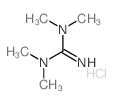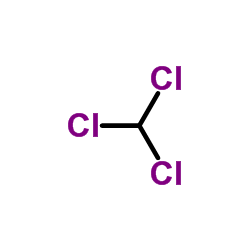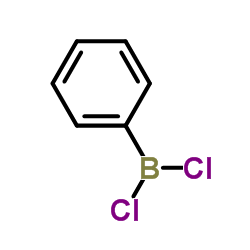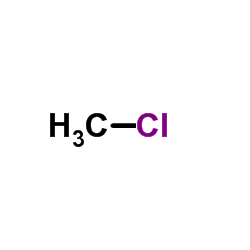Methyldichlorophosphine

Methyldichlorophosphine structure
|
Common Name | Methyldichlorophosphine | ||
|---|---|---|---|---|
| CAS Number | 676-83-5 | Molecular Weight | 116.91400 | |
| Density | 1.3 | Boiling Point | 81-82ºC | |
| Molecular Formula | CH3Cl2P | Melting Point | N/A | |
| MSDS | Chinese USA | Flash Point | 48ºC | |
| Symbol |



GHS02, GHS05, GHS06 |
Signal Word | Danger | |
| Name | Methyldichlorophosphine |
|---|---|
| Synonym | More Synonyms |
| Density | 1.3 |
|---|---|
| Boiling Point | 81-82ºC |
| Molecular Formula | CH3Cl2P |
| Molecular Weight | 116.91400 |
| Flash Point | 48ºC |
| Exact Mass | 115.93500 |
| PSA | 13.59000 |
| LogP | 2.40570 |
| Appearance of Characters | Liquid | Colorless |
| Index of Refraction | 1.4944-1.4964 |
| InChIKey | CDPKWOKGVUHZFR-UHFFFAOYSA-N |
| SMILES | CP(Cl)Cl |
| Storage condition | Flammables area |
| Water Solubility | Reacts with water. |
Synonym:Methyldichlorophosphine; Methylphosphonous dichlorid Section 2 - COMPOSITION, INFORMATION ON INGREDIENTS
Risk Phrases: 14 17 23/24/25 34 Section 3 - HAZARDS IDENTIFICATION EMERGENCY OVERVIEW
Reacts violently with water. Spontaneously flammable in air. Toxic by inhalation, in contact with skin and if swallowed. Causes burns.The toxicological properties of this material have not been fully investigated.Air sensitive.Lachrymator (substance which increases the flow of tears).Corrosive. Potential Health Effects Eye: Lachrymator (substance which increases the flow of tears). Causes eye irritation and burns. Skin: Harmful if absorbed through the skin. Causes skin irritation and burns. Ingestion: Harmful if swallowed. May cause severe and permanent damage to the digestive tract. Causes gastrointestinal tract burns. Inhalation: Harmful if inhaled. Causes chemical burns to the respiratory tract. Inhalation of decomposition products may cause severe injury or death. Chronic: Symptoms of exposure may include burning sensation, coughing, wheezing, laryngitis, shortness of breath, headache, nausea and vomiting. Chronic inhalation may cause spasm, inflammation and edema of the larynx and bronchi, chemical pneumonitis, and pulmonary edema. Section 4 - FIRST AID MEASURES Eyes: Get medical aid immediately. Do NOT allow victim to rub eyes or keep eyes closed. Extensive irrigation with water is required (at least 30 minutes). Skin: Get medical aid immediately. Immediately flush skin with plenty of water for at least 15 minutes while removing contaminated clothing and shoes. Wash clothing before reuse. Destroy contaminated shoes. Ingestion: Do not induce vomiting. If victim is conscious and alert, give 2-4 cupfuls of milk or water. Never give anything by mouth to an unconscious person. Get medical aid immediately. Wash mouth out with water. Inhalation: Get medical aid immediately. Remove from exposure and move to fresh air immediately. If breathing is difficult, give oxygen. Do NOT use mouth-to-mouth resuscitation. If breathing has ceased apply artificial respiration using oxygen and a suitable mechanical device such as a bag and a mask. Notes to Physician: Section 5 - FIRE FIGHTING MEASURES General Information: Evacuate area and fight fire from a safe distance. As in any fire, wear a self-contained breathing apparatus in pressure-demand, MSHA/NIOSH (approved or equivalent), and full protective gear. Water runoff can cause environmental damage. Dike and collect water used to fight fire. Vapors can travel to a source of ignition and flash back. Material can spontaneously ignite (pyrophoric) when exposed to air at normal or slightly elevated temperatures. May burn with invisible flame. During a fire, irritating and highly toxic gases may be generated by thermal decomposition or combustion. Water Reactive. Material will react with water and may release a flammable and/or toxic gas. Spontaneously ignitable in air. Vapors may be heavier than air. They can spread along the ground and collect in low or confined areas. May ignite or explode on contact with steam or moist air. May re-ignite after fire is extinguished. May burn rapidly with flare-burning effect. Extinguishing Media: Do NOT get water inside containers. Contact professional fire-fighters immediately. Cool containers with flooding quantities of water until well after fire is out. Use dry sand, dry chemical, soda ash or lime. DO NOT USE WATER, CO2, OR FOAM DIRECTLY ON FIRE ITSELF. For large fires, use dry sand, dry chemical, soda ash or lime or withdraw from area and let fire burn. Section 6 - ACCIDENTAL RELEASE MEASURES General Information: Use proper personal protective equipment as indicated in Section 8. Spills/Leaks: Avoid runoff into storm sewers and ditches which lead to waterways. Clean up spills immediately, observing precautions in the Protective Equipment section. Remove all sources of ignition. Use a spark-proof tool. Isolate area and deny entry. Provide ventilation. Place under an inert atmosphere. Do not use combustible materials such as paper towels to clean up spill. Do not get water on spilled substances or inside containers. Cover with dry earth, dry sand, or other non-combustible material followed with plastic sheet to minimize spreading and contact with water. Section 7 - HANDLING and STORAGE Handling: Wash thoroughly after handling. Remove contaminated clothing and wash before reuse. Do not allow water to get into the container because of violent reaction. Use spark-proof tools and explosion proof equipment. Do not breathe dust, vapor, mist, or gas. Do not get in eyes, on skin, or on clothing. Keep container tightly closed. Do not ingest or inhale. Handle under an inert atmosphere. Use only in a chemical fume hood. Store and handle protected from air. Discard contaminated shoes. Keep from contact with moist air and steam. Storage: Keep away from heat, sparks, and flame. Keep away from sources of ignition. Keep container closed when not in use. Store in a tightly closed container. Keep away from water. Flammables-area. Do not expose to air. Store under an inert atmosphere. Section 8 - EXPOSURE CONTROLS, PERSONAL PROTECTION Engineering Controls: Use explosion-proof ventilation equipment. Facilities storing or utilizing this material should be equipped with an eyewash facility and a safety shower. Use only under a chemical fume hood. Exposure Limits CAS# 676-83-5: Personal Protective Equipment Eyes: Wear appropriate protective eyeglasses or chemical safety goggles as described by OSHA's eye and face protection regulations in 29 CFR 1910.133 or European Standard EN166. Skin: Wear appropriate protective gloves to prevent skin exposure. Clothing: Wear appropriate protective clothing to prevent skin exposure. Respirators: A respiratory protection program that meets OSHA's 29 CFR 1910.134 and ANSI Z88.2 requirements or European Standard EN 149 must be followed whenever workplace conditions warrant respirator use. Section 9 - PHYSICAL AND CHEMICAL PROPERTIES Physical State: Liquid Color: colorless to pale yellow Odor: pungent odor pH: Not available. Vapor Pressure: Not available. Viscosity: Not available. Boiling Point: 81 - 82 deg C @ 760.00mm Hg Freezing/Melting Point: Not available. Autoignition Temperature: Not applicable. Flash Point: 48 deg C ( 118.40 deg F) Explosion Limits, lower: Not available. Explosion Limits, upper: Not available. Decomposition Temperature: Solubility in water: Reacts. Specific Gravity/Density: 1.3040g/cm3 Molecular Formula: CH3Cl2P Molecular Weight: 116.92 Section 10 - STABILITY AND REACTIVITY Chemical Stability: Powder or liquid is pyrophoric. Combines vigorously or explosively with water. Air sensitive. Conditions to Avoid: Incompatible materials, ignition sources, exposure to air, excess heat, strong oxidants, exposure to moist air or water. Incompatibilities with Other Materials: Water, strong oxidizing agents, strong bases, air. Hazardous Decomposition Products: Hydrogen chloride, phosphine, carbon monoxide, oxides of phosphorus, carbon dioxide. Hazardous Polymerization: Has not been reported Section 11 - TOXICOLOGICAL INFORMATION RTECS#: CAS# 676-83-5 unlisted. LD50/LC50: Not available. Carcinogenicity: Dichloromethylphosphine - Not listed by ACGIH, IARC, or NTP. Section 12 - ECOLOGICAL INFORMATION Section 13 - DISPOSAL CONSIDERATIONS Dispose of in a manner consistent with federal, state, and local regulations. Section 14 - TRANSPORT INFORMATION IATA Shipping Name: PYROPHORIC LIQUID, ORGANIC, N.O.S.* Hazard Class: 4.2 UN Number: 2845 Packing Group: IMO Shipping Name: PYROPHORIC LIQUID, ORGANIC, N.O.S. Hazard Class: 4.2 UN Number: 2845 Packing Group: I RID/ADR Shipping Name: PYROPHORIC LIQUID, ORGANIC, N.O.S. Hazard Class: 4.2 UN Number: 2845 Packing group: I Section 15 - REGULATORY INFORMATION European/International Regulations European Labeling in Accordance with EC Directives Hazard Symbols: T Risk Phrases: R 14 Reacts violently with water. R 17 Spontaneously flammable in air. R 23/24/25 Toxic by inhalation, in contact with skin and if swallowed. R 34 Causes burns. Safety Phrases: S 16 Keep away from sources of ignition - No smoking. S 23 Do not inhale gas/fumes/vapour/spray. S 26 In case of contact with eyes, rinse immediately with plenty of water and seek medical advice. S 36/37/39 Wear suitable protective clothing, gloves and eye/face protection. WGK (Water Danger/Protection) CAS# 676-83-5: No information available. Canada CAS# 676-83-5 is listed on Canada's NDSL List. CAS# 676-83-5 is listed on Canada's Ingredient Disclosure List. US FEDERAL TSCA CAS# 676-83-5 is listed on the TSCA inventory. SECTION 16 - ADDITIONAL INFORMATION N/A |
| Symbol |



GHS02, GHS05, GHS06 |
|---|---|
| Signal Word | Danger |
| Hazard Statements | H226-H250-H301-H311-H314-H331 |
| Supplemental HS | Reacts violently with water. |
| Precautionary Statements | P222-P231-P261-P280-P301 + P310-P422 |
| Personal Protective Equipment | Faceshields;full-face respirator (US);Gloves;Goggles;multi-purpose combination respirator cartridge (US);type ABEK (EN14387) respirator filter |
| Hazard Codes | T-F,T,F |
| Risk Phrases | 34-29-23/24/25-17-14-10 |
| Safety Phrases | S8;S16;S23;S26;S33;S43;S45;S36/S37/S39 |
| RIDADR | UN 2845 |
| Hazard Class | 6.1 |
|
~44% 
Methyldichlorop... CAS#:676-83-5 |
| Literature: Wang, Tao; He, Hong Wu Phosphorus, Sulfur and Silicon and the Related Elements, 2008 , vol. 183, # 8 p. 1884 - 1891 |
|
~% 
Methyldichlorop... CAS#:676-83-5
Detail
|
| Literature: Journal of the American Chemical Society, , vol. 109, # 19 p. 5614 - 5620 |
|
~% 
Methyldichlorop... CAS#:676-83-5 |
| Literature: European Journal of Inorganic Chemistry, , # 6 p. 865 - 875 |
|
~% 
Methyldichlorop... CAS#:676-83-5 |
| Literature: Angewandte Chemie, , vol. 71, p. 574 |
|
~% 
Methyldichlorop... CAS#:676-83-5 |
| Literature: Inorganic Chemistry, , vol. 10, p. 1028 B: B-Verb.1, 2.5.1.1.4, page 119 - 120 |
|
~% 
Methyldichlorop... CAS#:676-83-5 |
| Literature: J. Gen. Chem. USSR (Engl. Transl.), , vol. 51, # 3 p. 518 - 526,402 - 408 |
|
~% 
Methyldichlorop... CAS#:676-83-5 |
| Literature: Angewandte Chemie, , vol. 103, # 2 p. 191 - 193 |
|
~% 
Methyldichlorop... CAS#:676-83-5 |
| Literature: Angewandte Chemie, , vol. 71, p. 574 |
|
~% 
Methyldichlorop... CAS#:676-83-5 |
| Literature: Zeitschrift fuer Naturforschung, B: Chemical Sciences, , vol. 43, # 3 p. 257 - 260 |
| EINECS 211-631-8 |
| MFCD00013616 |
| dichloro(methyl)phosphane |


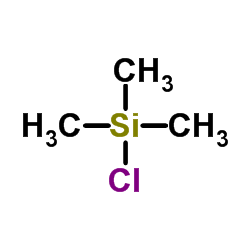

![2-[[bis(dimethylamino)methylideneamino]-methylphosphanyl]-1,1,3,3-tetramethylguanidine structure](https://image.chemsrc.com/caspic/145/157949-98-9.png)
